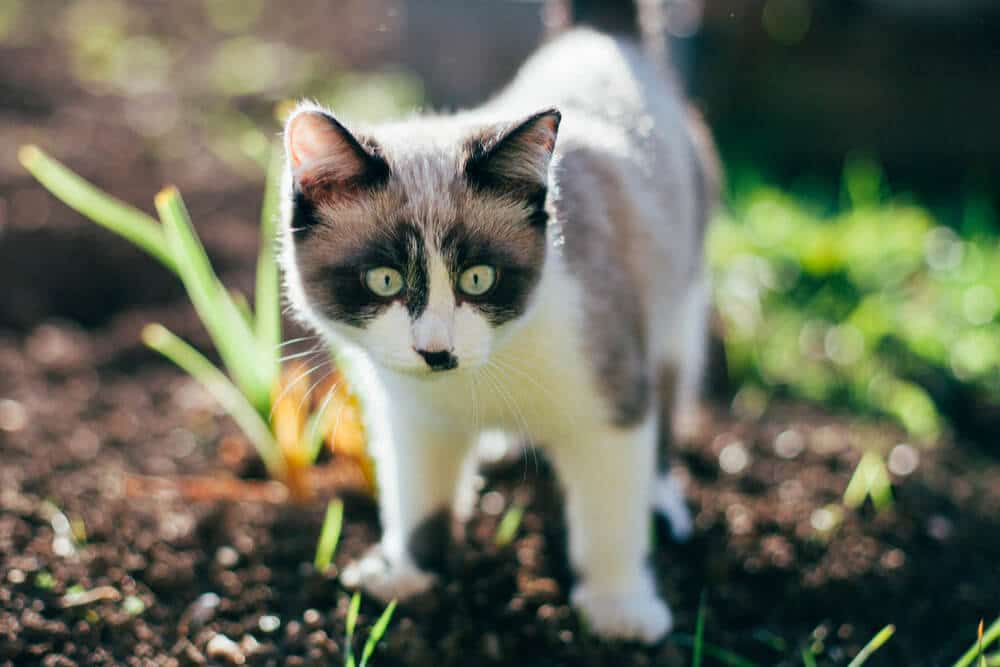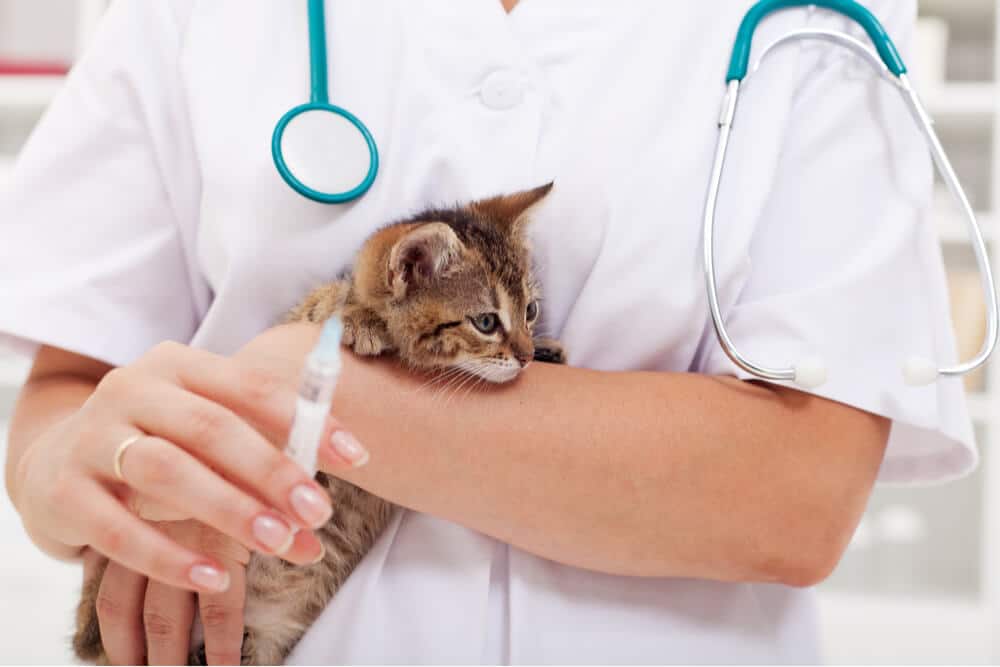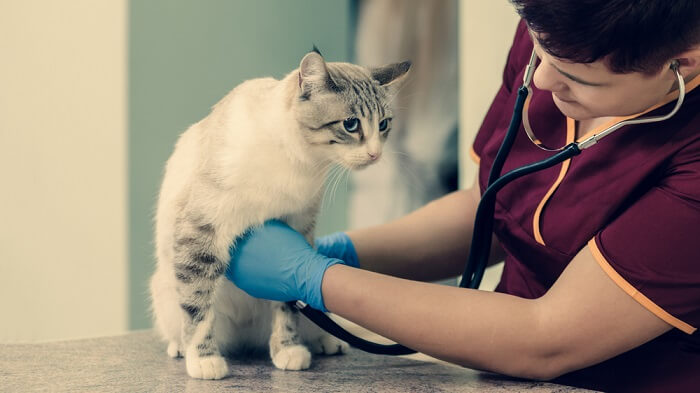
Distemper is an old-fashioned general term that’s used to describe a serious infectious disease of dogs and cats that causes fever along with respiratory, gastrointestinal, and neurological symptoms.
In dogs, Distemper is caused by Canine Distemper virus, while in cats, Feline Distemper is more commonly and correctly called “Feline Panleukopenia”, a serious and life-threatening viral infection caused by Feline Panleukopenia Virus (FPV).
What Type of Illness is Distemper in Cats?

Feline parvovirus (also known as distemper) is serious and life-threatening, with a high mortality rate among kittens.
Feline Distemper, or Feline Panleukopenia, is a highly contagious disease caused by the Feline Panleukopenia virus, with a high mortality rate for unvaccinated cats, especially kittens aged between 2 and 5 months.
The virus is similar to Canine Parvovirus, and the clinical signs are similar too, with the intestinal tract being a focus for viral damage. Infected cats have a high temperature, dullness, inappetence, as well as vomiting, diarrhea, and a range of other systemic signs. As its name suggests, the virus causes significant suppression of white blood cell production in the bone marrow (panleukopenia), with the consequently suppressed immune system making affected cats even more vulnerable to serious complications of the illness, including bacterial infections.
What Is the Distemper Vaccine for Cats?
The vaccine for Feline Distemper (Panleukopenia) is included in the standard combination vaccine that’s given to all kittens, otherwise known as the FVRCP vaccine.
Read More: FVRCP Vaccine for Cats: What You Need to Know
This vaccine includes Feline Viral Rhinotracheitis (caused by Feline Herpesvirus) and Feline Calicivirus, upper respiratory infections are known generally as “cat flu”, whose signs include sneezing and nasal discharge. These are all known as core vaccines, meaning that vaccinating all cats against these diseases is recommended under the World Small Animal Veterinary Association (WSAVA) and American Association of Feline Practitioners feline vaccination guidelines.
When Should Your Cat Get a Distemper Vaccine?

Kittens should receive their first distemper vaccination when they’re 8-9 weeks of age, followed by a second vaccine 3-4 weeks later, another at 14-16 weeks of age, and boosters 6-12 months later. Depending on the cat’s needs, further booster shots may be required every 1-3 years after that.
The precise timing of vaccinations depends on the type of feline vaccine schedule used by your local veterinarian, so you should discuss the details with them directly.
In general, vaccinations are recommended for young kittens at 8–9 weeks of age, with a second vaccine given 3–4 weeks later. A third vaccine is often given between 14–16 weeks of age. A booster vaccination is then given 6 – 12 months later, with further booster shots every 1 – 3 years depending on the cats’ needs.
Also Read: Cat Vaccination Schedule
To decide when or if your cat needs booster shots, discuss your cat’s lifestyle with your veterinarian.
How Much Does the Distemper Vaccine for Cats Cost?
The cost depends on your location and your choice of veterinarian: you should phone around your local area to discover the range of prices in the market place. In general, the fee represents a combination of a veterinary clinical examination of your pet (to make sure that they are healthy enough to vaccinate) as well as the cost of the virus vaccine itself.
Distemper Vaccine Side Effects

Side effects to Feline Distemper (Panleukopenia) vaccination are rare and usually very minor. They include transient episodes of dullness, with mild fever.
Occasionally, there may be minor swelling and discomfort at the injection site. As with any injected product, allergic anaphylactic vaccine reactions can occur, with more serious signs. This reaction, however, is extremely rare. As a veterinarian qualified for over thirty years, I have never witnessed this after a cat vaccination against Panleukopenia.







